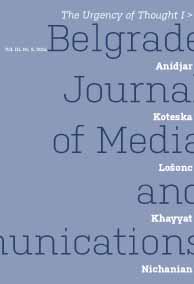The Status of Thought in Early Freud
The Status of Thought in Early Freud
Author(s): Jasna KoteskaSubject(s): Psychology
Published by: Fakultet za medije i komunikacije - Univerzitet Singidunum
Keywords: Sigmund Freud; thought; Studies on Hysteria; Project for a Scientific Psychology.
Summary/Abstract: This article argues that Freud produced two antithetical theses about the nature of thought in his early work. Koteska proposes that in Studies on Hysteria (1895) Freud read hysteria as a consequence of incongruent thoughts, to which he responded by raising the perspective of a slowness of thought, a step that gave birth to psychoanalysis. Almost simultaneously, in his largely overlooked manuscript Project for a Scientific Psychology (1895), Freud elaborated a second thesis about thought. Freud argued that thought has almost no utilitarian value and that it should therefore be urgently replaced by action. Koteska suggests that the two contrasted Freudian theories of thinking should be understood according to a principle of complementarity. They should be viewed through the concept of transfer, known in mid-19th century French neurology as the transference phenomenon and used by Freud to work with hysteria. Freud, Koteska concludes, was the first to extend the concept of transfer to both thoughts and actions in his Project for a Scientific Psychology, which is the earliest psychoanalytical anticipation of mirror neurons, discovered in late 20th century neuroscience.
Journal: Belgrade Journal of Media and Communications
- Issue Year: 3/2014
- Issue No: 05
- Page Range: 21-49
- Page Count: 29
- Language: English

